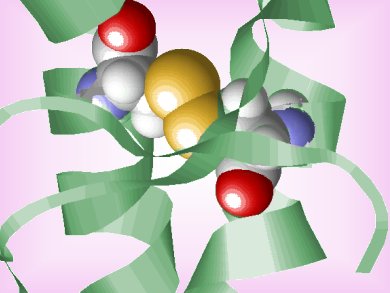Proteins have existed for billions of years. The photolytically weak sulfide bridges found in countless protein molecules would, one might imagine, not persist through evolution simply because it can be cleaved by light. Researchers at the University of Copenhagen, Denmark, and their colleagues have used quantum mechanical calculations to map the behavior of the pair of sulfur-containing radicals that form when such S–S bridges are photolyzed. The team then compared the predictions with their pump-probe experiments in femtosecond time-resolved mass spectrometry (TRMS).
Their findings suggest that after photolysis the radical pairs oscillate around the S–S center of mass and cannot stray too far because that would require another energy input to take them up to a higher energy level. The energetics of the system thus lock the two sulfur atoms together in time and space so that the bridge essentially remains intact despite the efforts of incident light to break it apart. The team explains that a similar “caging” effect is seen when solvated disulfides are irradiated with ultraviolet light, bolstering their hypothesis.
- Surprising Intrinsic Photostability of the Disulfide Bridge Common in Proteins,
Anne B. Stephansen, Rasmus Y. Brogaard, Thomas S. Kuhlman, Liv B. Klein, Jørn B. Christensen, Theis I. Sølling,
J. Am. Chem. Soc. 2012.
DOI: 10.1021/ja310540a




